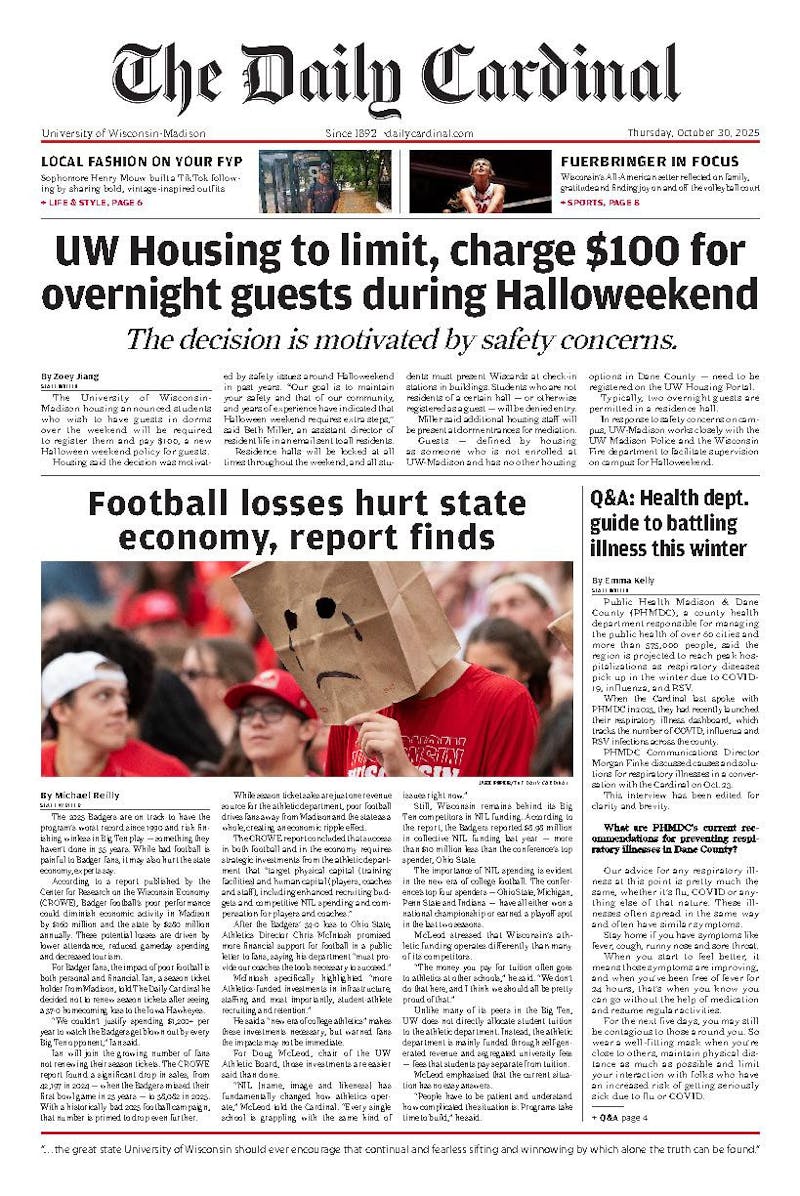At times even the most organized, most patient, most grounded student can be overwhelmed by all of the pressure and stress associated with four years of grades, tests and lectures. It is no secret that a visit with nature allows an individual the freedom to take a break from all the hassles of college life.
Just this type of opportunity presents itself Sept. 30, at the UW-Madison Arboretum. One of a series of year-round weekly nature walks is being held from 1 p.m. to 2:30 p.m. This particular Woodland Walk will highlight the plant and animal life that is prevalent only during the fall season.
Sept. 22 was officially the first day of fall, and Madison is only weeks away from the vibrant colors associated with autumn. In the Arboretum, these colors are already showing up in the grasses and at the edges of some trees.
Levi Wood, the tour leader for Sunday's walk, said that in terms of leaves and plants, we could be in for an especially colorful year, but that the weather greatly affects foliage.
'Daylight length, moisture and first frost all affect when colors first appear and how long they last,' Wood said. 'This September has been one of the moistest on record.'
In northern Wisconsin, fall colors are already in full force, indicating that south-central Wisconsin is only a couple weeks away.
'I plan to lead the group though Curtis Prairie [the first restored prairie in the world], Wingra and Gallistel Woods,' Wood said.
'[Curtis Prairie] contains grasses that are seven to eight feet tall,' said Molly Fifield Murray, the Arboretum's outreach programs manager. 'Most people haven't even seen a prairie.'
According to Wood, Wingra woods represent the forests of the Madison area as they might have existed without the influence of Europeans. Originally, loosely populated oak forests with a prairie under-story were very prevalent here. The woods are the efforts of the Arboretum staff to restore the original natural surroundings to the place.
'[The woods contain] mostly dominant, native oaks, with some hemlock around the edges,' Fifield Murray said.
On the other hand, Gallistel woods are a mixture of the original forest, as it existed before the Arboretum, with a large number of maples introduced and intended to dominate. As it is, even after a hundred years, the oaks and maples both still share Gallistel. The under-story of these woods is very different from Wingra's, as it isn't completely dominated by the oaks, and wildflowers are able to grow.
In addition to Sunday's events, Fifield Murray said there are events occurring throughout the year. A calendar of events is available from the Arboretum Web site at http://wiscinfo.doit.wisc.edu/arboretum/public/calndr.htm and upcoming events are accessible via recording at 263-7888.
Sunday's tour leaves from the newly expanded Arboretum Visitor Center, located about two miles down Arboretum Drive from the intersection of Mills and North Wingra Drive (behind St. Mary's and the Vilas Park Zoo), or about one mile off Seminole Highway.





